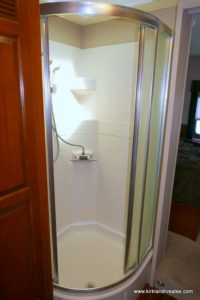Identifying RV Water Damage and What to Do About It
Contents
Recreational vehicles are quickly becoming the preferred mode of travel for families and people of all ages. Owners know there are undeniable freedom and convenience that can only come from traveling the open road in style in your own recreational vehicle. Because you want to enjoy your RV for years to come, as well as protect your financial investment, it’s wise to be aware of a few things.

Identifying RV Water Damage
More than any other problem, you need to know about water damage as an RV owner. Recreational vehicles live a tough life. Drivers regularly expose RVs to a wide array of weather and outdoor elements, and large amounts of snow, ice, and rain all find ways for water to make its way into your RV. Where there is water, there may be mold. Inhalation of mold spores can cause severe health problems, and it is the last thing you want to find in something as wonderful as your RV.
Taking preventative measures to decrease the likelihood of water damage is the first step. Should water damage already be an issue, your objective should be to pinpoint the leaks as speedily as possible. Then, try to minimize the cost of any water damage repairs. A few small steps can help you identify, prevent, and even treat your RV water damage. The following are ways you can recognize RV water damage and a plan for what you can do about it.
Seasonal RV Inspection
The best time to check your RV is during the change of every season. If you park and store your RV during the winter, you should inspect it in the spring, etc.
While you should check every part of your RV for water damage, the most likely places for water damage to occur is on the ceiling, walls, and floor. Search for stains on the walls and ceiling, as well as soft or squishy carpet areas and deteriorating paneling.
Be aware of any musty or damp smells in your RV. Under no circumstances should you dismiss what seems like inconsequential water damage – all too often what you are seeing is the tip of the iceberg. Better to be safe than sorry and have a professional RV service provider to evaluate the true extent of the damage.
Regular RV Maintenance
Perhaps you are fortunate enough to never discover any type of water leaks or damage in your RV to this point. That’s excellent news, but with each passing season, the line of defense designed to keep your RV dry begins to deteriorate and lose its effectiveness. This includes the roof, the caulking, and the seals of your RV.
You can eliminate these items as a possible point of entry for water by subjecting your RV to regular maintenance. The best strategy involves inspecting your recreational vehicle from top to bottom. If warranted, treat the seams and exposed joints with sealant or other items specifically designed for use with RVs.
Don’t forget the edges of the door, cabinets, vents, windows, and all compartments. If this seems like too much of a chore, a skilled RV professional service provider can do the job for you. The cost for this service is nominal in comparison to the significant amounts of money you would have to spend to repair water damage.
Evaluate the Damage
If, during a routine seasonal check or while performing RV maintenance, you do discover water damage, don’t panic. Ask yourself if the time and money required to make the repair is worth it. This question largely depends on what you are willing to spend.
Replacing entire walls or floors is not advisable while fixing small, isolated areas meets with reliable success. If the water damage has spread extensively, encompassing the entire roof or wall, you are in for a very labor-intensive repair.
RV Repair
To begin repairs of the water damage to your RV, you must first secure your RV in a dry, covered area for the duration of the repair process. Next, discover the precise source of the water leak or infiltration point. Once you find the source, strip away everything that might get in the way of the repair.
Remove the rotted components and then replace them with new, dry, and clean ones. Be sure any replacement wood is in tip-top shape. The next step is to restore the damaged area back to its original, like-new condition. Seal every nook and cranny on the outside of the RV. Check your vehicle after every snowfall or rain to see if everything is sealed uptight. Once you complete these steps, you are ready to enjoy your next adventure in your newly repaired RV.
Water Damage Evaluations
RV water damage repairs can be quite involved. At Kirkland RV Sales, we offer our customers fair and honest evaluations on water damage and make realistic recommendations for repair. If you think you have water damage in your RV, contact us today. Let us help you and your RV get back out on the road again.

